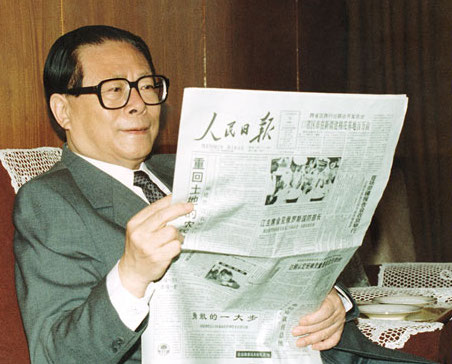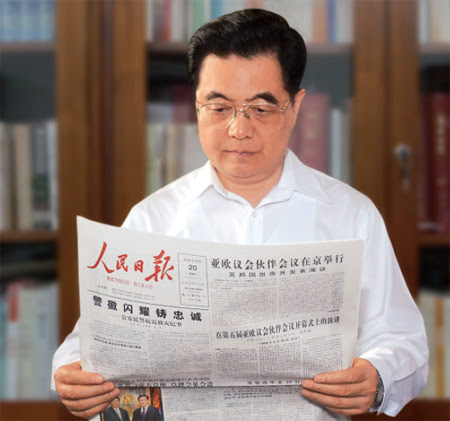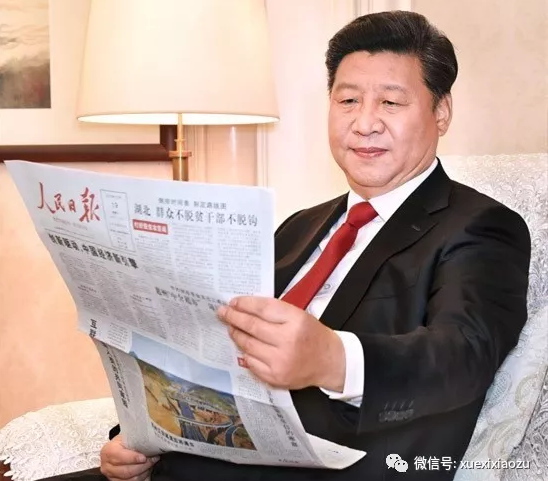THE CMP DICTIONARY
Doctrine of Good Fortune and Disaster
Doctrine of Good Fortune and Disaster
For generations, China’s top leaders have laid out their press-related policies during official inspection tours of the Chinese Communist Party’s flagship newspaper, the People’s Daily. When Jiang Zemin (江泽民) visited the newspaper in September 1996, his chief policy on the press had already been in place for more than seven years, having emerged as Jiang came to power in the wake of the Tiananmen Massacre of June 4, 1989. This policy centered on the notion of “guidance of public opinion” (舆论导向), the idea — borne of what top CCP leaders regarded as the “chaos” of the 1989 pro-democracy movement — that the ideas of the people had to be restrained through active Party press controls in order to maintain social and political stability.

As Jiang Zemin visited the People’s Daily in 1996, China’s Party-led media were on the cusp of a dramatic transformation despite several years of much stricter political control in the aftermath of 1989. The leadership was pushing a process of commercial reform in the media, which were becoming ever more reliant on advertising as a source of revenue. In 1983, in the early years of economic reform, advertising had accounted for just 10 percent of revenues in China’s newspaper sector — which was not at the time regarded as an industry. By 1997, advertising would account for 60 percent of total revenue. And by this time, there would be talk in China of a “media industry.”
But even as Chinese media developed commercially, they had to move forward under a regime of strict political “guidance,” in keeping with Jiang’s post-Tiananmen media policy.
“Today, comrades, I wish to speak solemnly about guidance of public opinion,” Jiang began his speech at the People’s Daily. “Historical experience continually shows us that whether or not guidance of public opinion is correct has an important role in the Party’s development and strengthening, in the building and consolidation of the people’s power, and in the unity of the people and the prosperity of the nation.”

This was tantamount to saying that press control was necessary to stability and prosperity. And in a subsequent line, Jiang made this explicit. In what subsequently became known as in the party-state media as “the doctrine of good fortune and disaster” (福祸论), Jiang added: “Correct guidance of public opinion means the good fortune of the Party and the people: incorrect guidance of public opinion means disaster for the Party and the people (舆论导向正确,是党和人民之福;舆论导向错误,是党和人民之祸).
By the time Jiang’s successor, Hu Jintao, visited the People’s Daily to lay out his first full-fledged media policy in June 2008, just two months ahead of the Beijing Olympic Games, China’s commercially driven media were already in their heyday. But Hu cautioned that the Party’s political control of the media remained the order of the day. Introducing an elaborated version of Jiang’s doctrine of good fortune and evil, he told those present:
Correct guidance of public opinion benefits the party, benefits the nation, and benefits the people. Incorrect guidance of public opinion wrongs the party, wrongs the nation, and wrongs the people.
This version was referred to as the “three benefits and three wrongs” (三利, 三误).
In his first full-fledged media policy speech, which came on February 19, 2016, early in his first term, Xi Jinping again reiterated Jiang Zemin’s doctrine of good fortune and evil. In the same address, however, he also introduced a more involved version of the same idea — portraying “correct guidance” as essential to national progress:
With correct guidance of public opinion, it is possible to unite people’s hearts and minds, gather strength, and promote the development work; but if public opinion is wrongly guided, this will shake people’s hearts and minds, disintegrate the fighting spirit, and jeopardize the cause of the Party and the people.
舆论导向正确,就能凝聚人心、汇聚力量,推动事业发展;舆论导向错误,就会动摇人心、瓦解斗志,危害党和人民事业。

In more recent years, Xi Jinping’s version of the doctrine of good fortune and disaster has come under the so-called “Four Forces” (四力) of “news and propaganda work” (新闻舆论工作) — this being the CCP’s longstanding phrase encompassing media and cultural controls. The second of the “Four Forces” is “guiding force” (引导力), which refers to the power of media to “put the public on the correct value path” (i.e., sharing the values and priorities of the Party), to create unity and consensus, and to “create the capacity of positive development.”

David Bandurski
The CMP Dictionary
C
D
F
G
M
N
P
S
- Scaling the Wall
- Science
- Second-Generation Reds
- Security
- Seeking Progress in Stability
- Seeking Truth From Facts
- Self-Revolution
- Seven Bottom Lines
- Six Adheres
- Smart Governance
- Sneaky Visit
- So-Called
- Socialite
- Soft Resistance
- Soul and Root
- Soundless Saturation / Quietly Nourishing
- Sovereignty
- Speaking Politics
- Streamlining Services
- Strong Cyber Power

